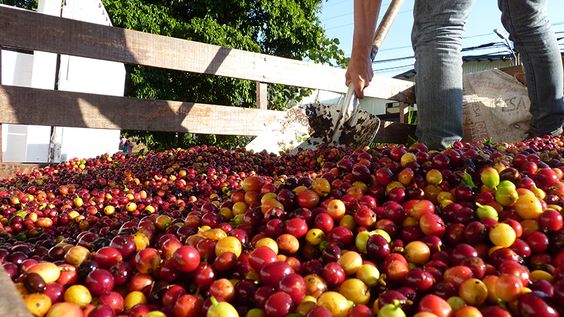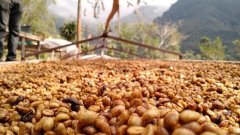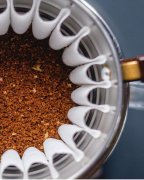What is the anaerobic fermentation treatment of coffee? the characteristics of anaerobic fermentation treatment
The emergence of anaerobic fermentation treatment
With the increasing prosperity of the global boutique coffee market, more and more attention is being paid to quality from the production end to the consumer side. From planting, to post-harvest, to extraction, every link is in the "developing" stage, every once in a while there are always new techniques, new concepts, new models are used in the coffee industry.
In terms of post-treatment, in recent years, in addition to the traditional washing and sun treatment, Indonesia's unique wet peeling method, and the honey treatment led by Costa Rica, several new or experimental treatments have also been developed rapidly. Among them, the "anaerobic fermentation treatment Anaerobic Fermentation", which imitates red wine brewing, has attracted special attention. We won the title of 2015WBC from Sasa Sestic from Australia in 2015 with a coffee bean simulating "red wine treatment". Five of the top six contestants in the 2018 WBC Competition (except the Dutch contestants) unanimously chose the coffee beans of "anaerobic fermentation treatment Anaerobic Fermentation" to participate in the competition, and it is not difficult to see their strong posture.
What is anaerobic fermentation treatment?
According to Sasa Sestic himself, the method is to inject carbon dioxide into an airtight container to squeeze out the oxygen from the noodles, slow down the decomposition rate of sugar in coffee pectin in an oxygen-free environment, decrease the ph value more slowly, and prolong the fermentation time, thus developing a better sweetness and a more balanced flavor.
Characteristics of anaerobic fermentation treatment
1. Fermentation in a closed environment can reduce the uncontrollable factors of the external environment on the fermentation process.
2. Fermentation in an oxygen-free environment for a long time can increase the round flavor and avoid uncomfortable dryness and acetic acid.
3. The coffee beans produced by this method have fuller thickness, bright wine aroma, low acidity and better sweetness.

Important Notice :
前街咖啡 FrontStreet Coffee has moved to new addredd:
FrontStreet Coffee Address: 315,Donghua East Road,GuangZhou
Tel:020 38364473
- Prev

Innovative treatment of coffee beans difference of three processing methods of coffee beans: sun exposure, washing and honey treatment
Innovative treatment methods have become a trend in recent years, and many brand-new or deformed treatment methods continue to appear, bringing many different taste spectrum experiences. But also because of the emergence of these treatments. Simply cite the classification of several traditional treatments in previous years, such as solarization (Unwashed/Natural), honey (Honey Process) or peeling (Pulp Nat).
- Next

Characteristics and flavor of Mantenin tiger coffee in Sumatra, Indonesia
The background of Sumatra, Indonesia, especially Sumatra, is a very complicated place, because Sumatra / Mantenin coffee is separated from the international market and has a large number of demanders. many locals ship coffee from different producing areas or even different islands to Sumatra and then sell it at a high price in the name of Sumatra / Mantenin.
Related
- Beginners will see the "Coffee pull flower" guide!
- What is the difference between ice blog purified milk and ordinary milk coffee?
- Why is the Philippines the largest producer of crops in Liberia?
- For coffee extraction, should the fine powder be retained?
- How does extracted espresso fill pressed powder? How much strength does it take to press the powder?
- How to make jasmine cold extract coffee? Is the jasmine + latte good?
- Will this little toy really make the coffee taste better? How does Lily Drip affect coffee extraction?
- Will the action of slapping the filter cup also affect coffee extraction?
- What's the difference between powder-to-water ratio and powder-to-liquid ratio?
- What is the Ethiopian local species? What does it have to do with Heirloom native species?

